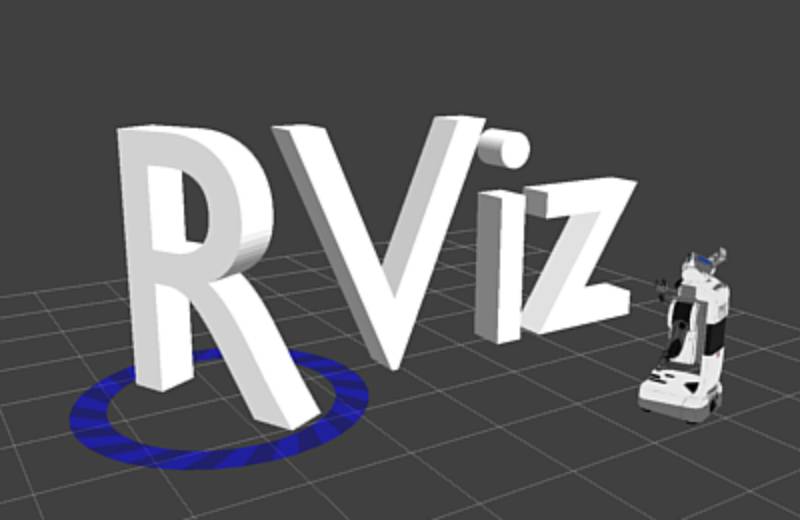1. Introduction & Overview
What is RViz?

RViz (ROS Visualization) is a 3D visualization tool for the Robot Operating System (ROS). It allows engineers and operators to visualize sensor data, robot states, environments, and transformations in real time. RViz is essential in RobotOps (DevOps practices for robotics) because it provides visibility into the operational status of robots during development, deployment, and monitoring.
History & Background
- Introduced: Originally developed by Willow Garage in 2008 as part of ROS.
- Evolution: Became the standard visualization tool for ROS 1 and later extended to ROS 2.
- Adoption: Widely used in academia, industry, and autonomous robotics startups.
Why is it relevant in RobotOps?
- Operational Visibility: Debugging robotic systems in real time.
- Testing & Simulation: Validating sensor streams, SLAM (Simultaneous Localization and Mapping), and navigation.
- CI/CD Integration: Enables automated testing of robotic software pipelines.
- Cloud Robotics: Used in remote monitoring dashboards.
2. Core Concepts & Terminology
| Term | Definition |
|---|---|
| ROS | Robot Operating System, middleware framework for robotics. |
| TF (Transform) | Coordinate transformations between robot links and sensors. |
| Topic | A stream of data (e.g., camera feed, laser scan). |
| Marker | Visual elements (e.g., arrows, points, meshes) for debugging in RViz. |
| Plugin | RViz extension that adds new visualization capabilities. |
| Pose | Position + orientation of a robot or sensor in 3D space. |
How RViz fits into the RobotOps Lifecycle
- Development: Debugging robot models, verifying sensors.
- Testing: Automated visualization checks in CI pipelines.
- Deployment: Monitoring robot fleet status in production.
- Ops/Monitoring: Ensuring real-world robot behavior matches simulation.
3. Architecture & How It Works
Components
- Visualization Core: Manages rendering of 3D data.
- Data Input: Subscribes to ROS topics (camera, lidar, joint states).
- Plugins: Extend support (point clouds, occupancy grids, path planning).
- TF System: Handles coordinate frames and transformations.
- UI Layer: Provides GUI controls for robot operators.
Workflow
- RViz subscribes to ROS topics published by the robot.
- Data is passed through plugins (e.g., PointCloud2, Odometry).
- Rendered in a 3D environment for analysis and debugging.
- Operators interact via GUI or scripted automation.
Architecture Diagram (text description)
[Robot Sensors & Simulation] → [ROS Topics] → [RViz Core]
→ [Visualization Plugins] → [3D Visualization / GUI]
Integration Points with CI/CD & Cloud Tools
- CI: Automated visualization validation using Dockerized RViz setups.
- CD: Integrate with ROS2 launch files for staging environments.
- Cloud: Run RViz on cloud GPUs for remote debugging.
- Monitoring: Coupled with Prometheus/Grafana for hybrid dashboards.
4. Installation & Getting Started
Prerequisites
- Ubuntu 20.04/22.04 (recommended for ROS)
- ROS 1 (Noetic) or ROS 2 (Foxy/Humble)
- GPU drivers (NVIDIA recommended for heavy 3D data)
Installation Steps (ROS 2 Humble Example)
# Update and install ROS 2
sudo apt update && sudo apt upgrade -y
sudo apt install ros-humble-desktop -y
# Source ROS environment
source /opt/ros/humble/setup.bash
# Install RViz2
sudo apt install ros-humble-rviz2 -y
# Launch RViz
rviz2
Hands-on Setup
- Start ROS core:
roscore - Launch RViz:
rviz - Add visualization:
- From RViz GUI → “Add” → Choose
LaserScanorOdometry.
- From RViz GUI → “Add” → Choose
- Publish test data:
rostopic pub /test_topic geometry_msgs/Pose '{position: {x: 1, y: 2, z: 0}}'
5. Real-World Use Cases
Example 1: Autonomous Vehicles
- Visualizing LiDAR point clouds and camera feeds.
- Debugging SLAM in self-driving cars.
Example 2: Industrial Robotics
- Monitoring robotic arms in assembly lines.
- Checking path planning in CI pipelines.
Example 3: Healthcare Robots
- Navigation debugging for hospital delivery robots.
- Visualizing obstacle avoidance.
Example 4: Drones (UAV Ops)
- Displaying altitude, GPS tracks, and flight paths.
- Integrating with simulation environments (Gazebo, Ignition).
6. Benefits & Limitations
Benefits
- Real-time debugging of complex robotic systems.
- Flexible plugin system for customization.
- Essential for simulation-to-deployment workflows.
- Integrates with ROS ecosystem seamlessly.
Limitations
- Requires GPU resources, can be heavy on hardware.
- Not web-native (desktop app, limited cloud UI).
- Limited built-in automation (requires external scripting).
7. Best Practices & Recommendations
- Performance: Use efficient message throttling for large sensor data.
- Security: Run RViz only in trusted networks (ROS topics can be exposed).
- Automation: Record RViz sessions with
rosbagfor CI/CD testing. - Maintenance: Regularly update ROS & plugins for compatibility.
- Compliance: Document visualization workflows for safety certification (ISO 26262, ISO 10218).
8. Comparison with Alternatives
| Tool | Use Case | Pros | Cons |
|---|---|---|---|
| RViz | General 3D visualization for ROS | Native to ROS, rich plugins, real-time | Desktop-only, GPU heavy |
| Gazebo/Ignition | Physics-based simulation | Full robotics simulation + visualization | Complex, slower for pure visualization |
| Foxglove Studio | Cloud visualization & analytics | Web-native, telemetry analysis | Less mature than RViz for ROS TF |
| Matplotlib/3D | Data plotting | Lightweight for analysis | Not real-time, lacks robotics context |
When to choose RViz?
- During development & debugging of ROS systems.
- When real-time visualization is required.
- If deep TF/ROS integration is needed.
9. Conclusion
RViz is a cornerstone tool in RobotOps, bridging the gap between raw sensor data and human understanding. It plays a vital role in:
- Development: Debugging and testing robot perception.
- Operations: Monitoring live robots in industrial and research environments.
- CI/CD: Automating visualization checks for robotic pipelines.
Future Trends
- Web-based RViz integrations for cloud robotics.
- AI-enhanced visualization (automatic anomaly detection).
- Fleet-wide visualization dashboards.